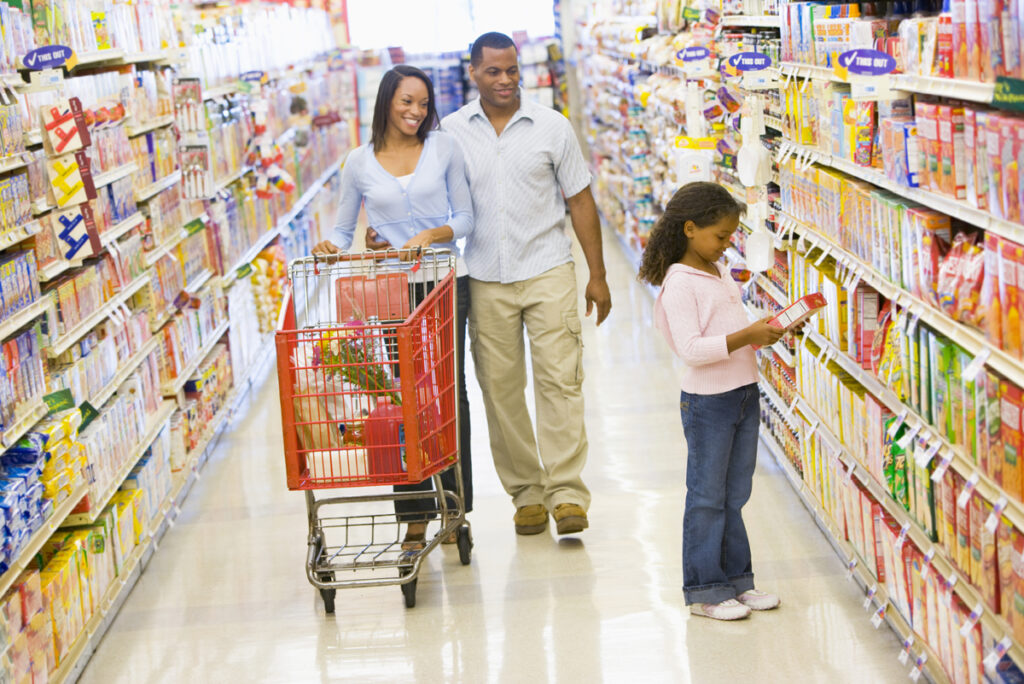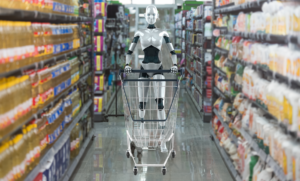The grocery landscape has changed enormously from the days of the general store, when a clerk behind a counter would fetch goods for customers from scantily stocked shelves. Francesco Fazio, a partner at Treacy & Company, and Xiao Liu, his former Treacy & Company colleague, write, “The way that consumers shop for groceries, and how supply chains get goods from beginning to end, has changed radically since the first ‘modern’ supermarket, a store named Piggly Wiggly, first opened in Chicago in 1916. The post-WWII era in the U.S. ushered in the modern supermarket, transforming how people expect to purchase their groceries. There have been many more changes since then, including how products are produced and packaged, how they reach supermarkets, and how the consumer ultimately purchases them.”[1] The selection of items currently available in most supermarkets would dazzle shoppers from days gone by. And change continues to take place. At the end of last year, journalist Russell Redman asked, “Are we on the verge of a new grocery landscape?”[2] What prompted Redman’s question was the proposed merger between Kroger and Albertsons. Redman noted, “Regulatory clearance remains uncertain, but a Kroger-Albertsons merger could spark changes across the marketplace.”
As of this writing, that merger is still in works. Back in January, reporter Julie Creswell observed, “Consumer advocates, unions and independent grocers are against a deal that would join Kroger and Albertsons. … Washington Analysis, a research firm in Washington, D.C., that focuses on political and regulatory policy, put the odds of the merger successfully closing at 35 percent.”[3] Why all the fuss about the merger? Journalists Amy McCarthy and Jaya Saxena explain, “It’s likely that the place you shop for groceries every week is owned by one of two companies — Kroger, or Albertsons. Together, these two corporate behemoths own more than 5,000 supermarkets across the country, including regional chains like King Soopers, Harris Teeter, Safeway, Ralphs, and Vons, and now they’re looking to consolidate the grocery industry even further by joining forces in a $24.6 billion merger.”[4] Redman adds, “On the dollars side, Kroger and Albertsons generated a combined $210 billion in revenue and $3.3 billion in net earnings in fiscal 2021. … [If they merge,] only Walmart ($466.8 billion) and Amazon ($279.8 billion) would be bigger in overall sales.”
The proposed merger isn’t the only thing generating tremors across the grocery landscape. McKinsey & Company analysts, Bill Aull, Dymfke Kuijpers, and Daniel Läubli, note, “Changes to the global grocery retail market are happening fast. Trends that emerged during the pandemic are persisting, reshaping the industry. Consider this: in December 2019, the percentage of e-commerce grocery sales in the US market was slightly under 4 percent; it’s now in the low teens and is expected to reach roughly 25 percent by 2030. The adoption of online grocery is expected to be even higher in parts of Europe.”[5] Currently, inflation is having an impact on the grocery sector as food prices continue to outpace inflation in other areas. As Kuijpers notes, “Inflation is hitting, and unlike at the beginning of the pandemic when people were just worried about availability of product, people now care big time about value. That’s number one.”
How the Changing Landscape is Affecting Logistics
Fazio and Liu explain, “E-commerce grocery has always faced the challenge of profitability. After all, the current model for online fulfillment still resembles the traditional method of shopping for groceries — it’s just that a hired hand, either a store clerk or third party, does the job for you. This is inefficient. It typically takes more than 60 seconds for a store associate or on-demand driver to pick out a single item.” Ironically, this model harkens back to the days of the general store, when clerks retrieved goods from store shelves. To improve efficiency and profitability, they believe grocers need to concentrate on improving packaging because, “In e-commerce, everything needs to be bagged.” Next, grocers need to improve inventory management. According to Fazio and Liu, “Historically, most supermarkets have struggled with accurate, real-time data on in-store inventory and stock replenishment.” Finally, they believe grocers must upgrade the technologies they use as do stakeholders along the rest of the supply chain. They explain, “Supermarket chains need first to upgrade their technologies. But the entire supply chain must improve with them shortly thereafter. Distributors will now face higher expectations to deliver the right stock at the right time, with the ability to make rapid adjustments based on the changing needs of each individual supermarket. Transportation companies will also have to raise service levels in support of grocers.”
One might get the impression from Fazio’s and Liu’s remarks that grocers aren’t adapting fast enough to the changing landscape. Julie Companey, Director of client strategy at Vericast, insists grocers deserve more credit for the changes they are making. She writes, “Two words that best describe the CPG and grocery retail industry’s response to changes in consumer behavior are impressive and ongoing.” She adds, “First, it was the pandemic that drove massive overnight changes in the ways consumers shop for grocery retail essentials like food, health and beauty products, personal care and household items, and even pet supplies. Then it was pandemic-related issues like supply chain disruption and inflation that have caused grocery retailers to rethink inventory strategies and how consumers define convenience, loyalty and value. At every twist and turn, brands and grocers have responded to crisis and disruption with innovation, ingenuity and reinvention. Until the next big thing pops up, I expect that many of the changes to the way consumers now shop for groceries and purchase CPG retail items will remain.”[6]
Concluding Thoughts
I agree with Companey that grocers need to be recognized for adapting to a rapidly changing landscape. She concludes, “I feel CPG brands and grocery retailers should be applauded for all they’ve accomplished over the past [few] years to react to changes in consumer behavior and prepare for retail’s future — but there’s a shopping cart full of opportunity still ahead!” To help CPG brands take advantage of those opportunities, Enterra Solutions® developed the Enterra Revenue Growth Intelligence System™ (ERGIS™). ERGIS autonomously analyzes, optimizes, and prescribes recommendations to identify the trade promotion schedule and pricing strategy that will drive the best performance within an increasingly complex market. Leveraging the power of Enterra’s Autonomous Decision Science™ (ADS®) technology, the solution cuts down trade promotion planning processes from weeks to minutes, with higher degrees of accuracy, delivering greater efficiencies while accelerating profitable growth. The grocery landscape will continue to change and leading retailers will find ways to adapt to those changes.
Footnotes
[1] Francesco Fazio and Xiao Liu, “How the Changing Nature of Grocery Shopping Impacts Food Logistics,” SupplyChainBrain, 26 August 2022.
[2] Russell Redman, “Are we on the verge of a new grocery landscape?” Supermarket News, 6 December 2022.
[3] Julie Creswell, “Kroger-Albertsons Merger Faces Long Road Before Approval,” The New York Times, 23 January 2023.
[4] Amy McCarthy and Jaya Saxena, “A Kroger-Albertsons Merger Would Be Bad for Almost Everyone,” Eater, 24 March 2023.
[5] Bill Aull, Dymfke Kuijpers, and Daniel Läubli, “The state of grocery retail around the world,” McKinsey & Company, 6 October 2022.
[6] Julie Companey, “Retailers’ Response To Shifting Behavior Is Impressive, Ongoing,” The Shelby Report, 18 August 2022.





